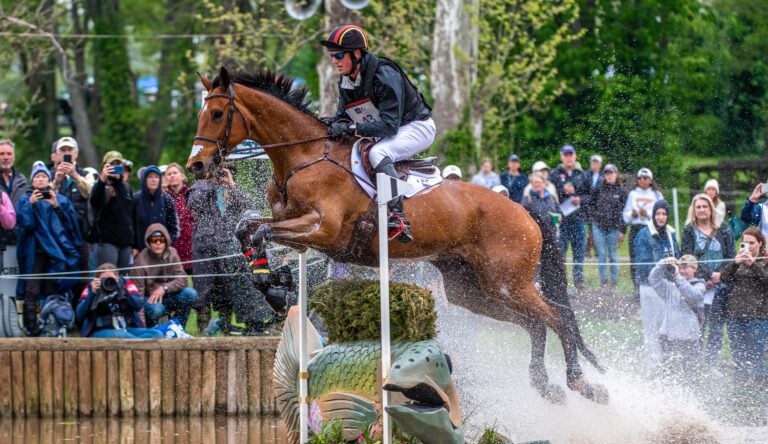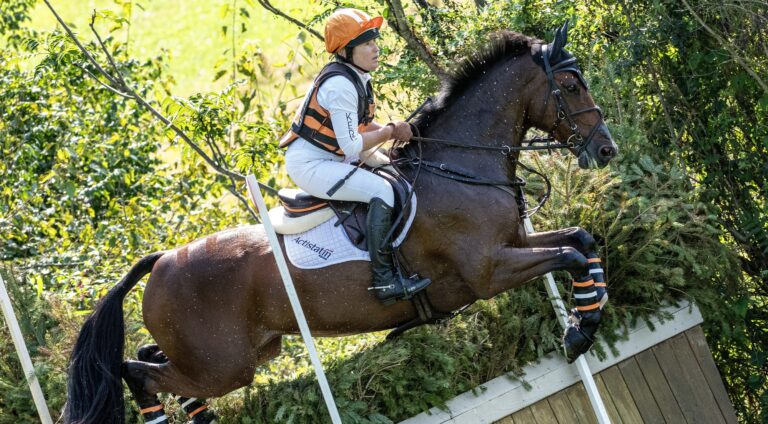
A compilation of eight international disciplines, the 2018 FEI World Equestrian Games™ will be packed with plenty to see and do for 13 days of sport and ceremony in mid-September, seemingly enough to feed any horse lover’s soul. Yet if you talk to Mark Bellissimo, the mastermind of this year’s WEG at the Tryon International Equestrian Center in North Carolina, you’ll find there’s an even broader vision in play.
Just weeks after tickets for the September 11–23 extravaganza went on sale, thousands had been purchased by buyers in all 50 states as well as 31 countries. But WEG, held every four years, will have a reach beyond the competition in the Olympic disciplines of jumping, dressage and eventing, as well as endurance, vaulting, para-dressage, reining and four-in-hand driving.
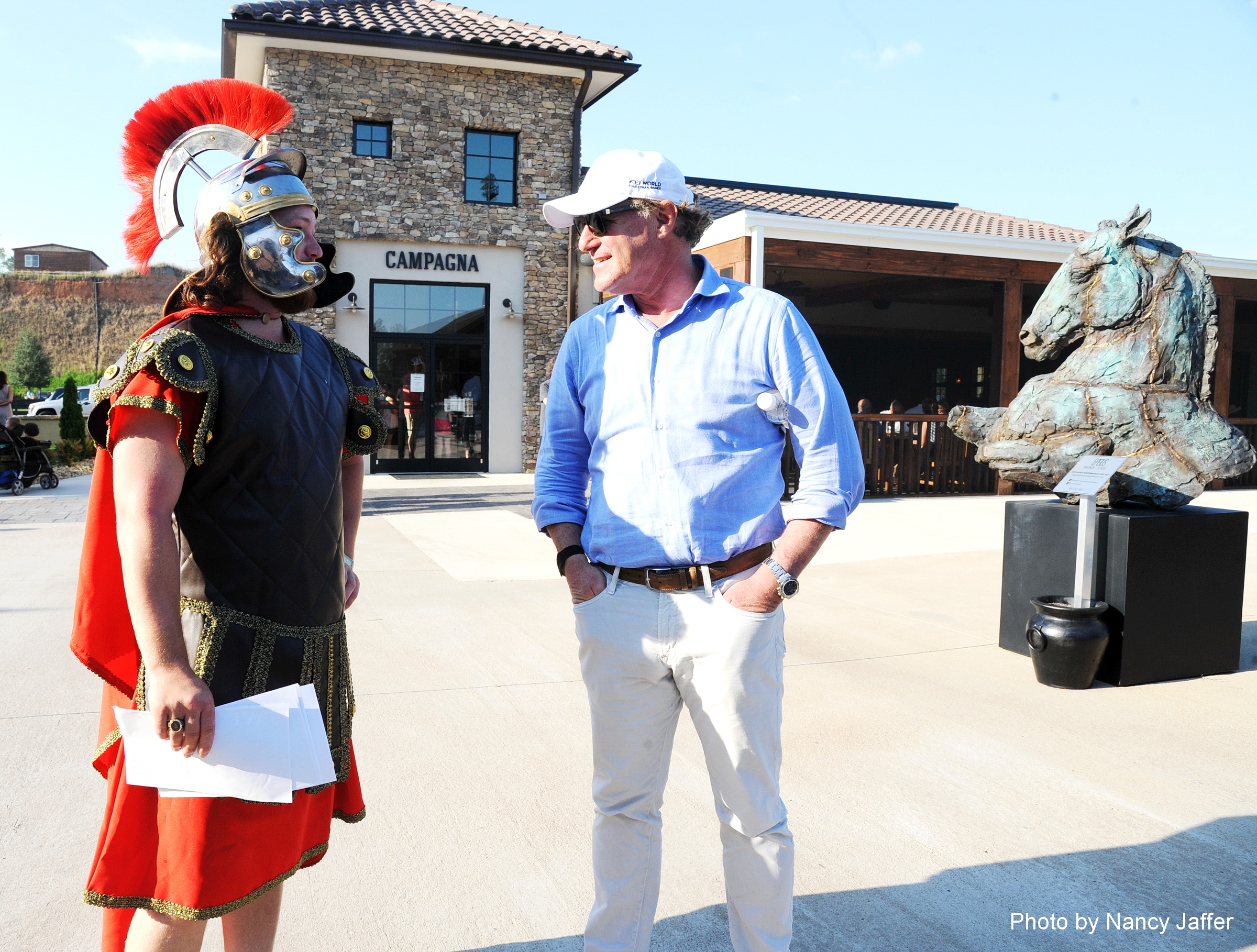
“The most transformational opportunity for equestrian sport in this country in the dimensions of sponsorship diversity, media exposure and spectator participation” is how Mark describes the WEG. That means its closing ceremonies won’t be an ending. Instead, Mark envisions developing the World Equine Expo, an innovation at this year’s Games, into a stand-alone annual event in approximately the same time frame each year. The expo will include vendors, an educational component and non-WEG competition, such as gladiator polo, a compact version of the game that’s played with three team members instead of four in an arena one-tenth the size of a regulation polo field. Other exhibitions will include variations on some of the WEG disciplines, including show jumping.
Making the expo an annual event “will allow us to secure a lot of sponsors who are looking for a longer-term investment in the sport,” says Mark. “Our whole strategy is centered around the love of the horse. The theme for the expo is, ‘Celebrate the Horse, Celebrate the Sport.’”
Explaining the thought process behind having the WEG as the springboard for a yearly fixture going forward, the entrepreneur notes, “You don’t want to disappear overnight.” With most of the WEGs that have been staged since the every-four-years concept debuted in 1990, all the effort put into them was history after the closing ceremonies.
The 2018 WEG, with an early estimate of nearly 840 horses attending, is geared to creating a wider audience for horse sports and there are hopes that will continue to grow after the final medal is awarded. “We’re going to have about 60 hours of live programming, which is unprecedented in this country,” says Mark, noting some will be on the NBC network with the rest on its sports channel and other outlets. Together with digital coverage, the effect will be “very significant and impactful on the presentation of the sport. We’re able to get to a very, very broad group of horse lovers.”
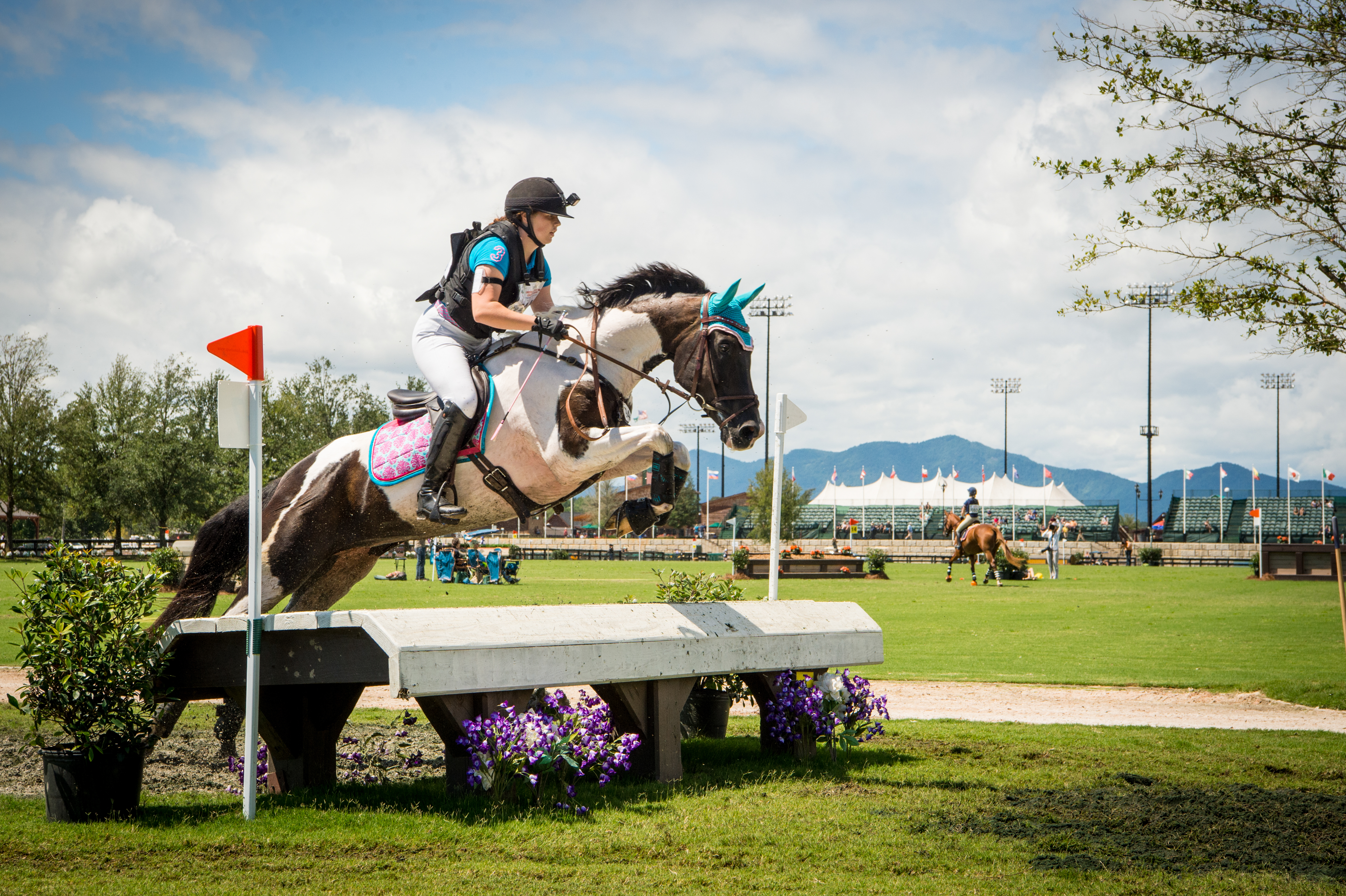
A Compact Footprint
Unlike the 2014 WEG host, Normandy, France, which was plagued with transportation problems because disciplines were in various venues in the city and beyond, Tryon brings everything back to one location on 1,600 acres, a facility that was purpose-built for equestrian competition. Stables are permanent, rather than the tents found at some other WEGs and so close to arenas that “you don’t even need a golf cart,” says eventer Doug Payne, a North Carolinian who competes frequently at TIEC in both eventing and jumping.
“The footprint is very compact. You can see a lot without walking a lot,” says Eric Straus, the sport coordinator for the WEG who will deal with all eight disciplines. A veteran of several WEGs, Eric has high praise for Tryon, calling it “a superb venue. It already comes with most of the bells and whistles and what we’re adding will just make it better for WEG and the future.”
Although many of the facilities have been in place for several years, at press time there was still a great deal to be finished and three different construction firms were busy on site in the autumn while road work also was going on. The George Morris Arena, the main ring for the regularly scheduled Tryon jumping and dressage shows, will be used during the WEG for eventing’s dressage phase as well as para-dressage. Eventing show jumping as well as Grand Prix dressage and show jumping will be held in a venue slated to seat 20,000 around what has been used as a grass derby field that will be temporarily covered with all-weather footing.
Between that arena and the George Morris Arena, a permanent three-story hospitality and media center is going up. On the west side of the property, the covered arena is being transformed into an indoor ring that will host the reining and vaulting. A cross-country course that also will include marathon obstacles for the driving is being carved out on the other side of the property.
The competition grounds have a wide variety of restaurants, from a diner to a sushi place, an Italian spot and a bar and grill with a theme that can best be described as hunt-country horsey. There’s also a general store offering sandwiches and a variety of groceries and snacks. Riders, coaches, grooms and staff, meanwhile, will have their own hospitality areas.
One unique feature planned for the WEG is an athlete village with housing on site. Tryon Equestrian Partners owns U.S. Precision Construction, a prefab building manufacturer, which is tasked with creating lodging for competitors. Now it’s a race against the clock to get that finished before the Games. Plan B, Mark says, involves having 3,000 hotel rooms on hold within a 30-minute drive from TIEC.

Around the Area
TIEC is located in an area dotted with small towns. There’s a country feel to many places, such as Forest City, where people relax in rocking chairs in front of the drugstore. The regional mood is friendly as residents are eager to welcome international visitors.
Spectators planning to come to the WEG who prefer to stay in city hotels can try quaint Asheville, home of the Biltmore Estate an hour to the west of Tryon, or Charlotte, about a 75-minute drive to the east and the site of the largest airport in the region. A Salamander hotel is planned for TIEC but had not been built at press time.
Cesar Hirsch, who will be the FEI’s chief steward for the WEG, has spent time at Tryon and is impressed. “Sporting-wise, it’s going to be one of the best WEGs in history. I’ve been coming here since day one. I can see the improvement and all the effort behind this. It’s going to be amazing.”
U.S.-based Irish rider Shane Sweetnam, a regular competitor at Tryon, is looking forward to the WEG. “It’s going to be exciting when the WEG is here. The standard is getting better every year. They’re always trying to make improvements.”
A Home-Country Advantage?
“It’s wonderful to have major championships like this at home,” says McLain Ward, citing the support at Omaha, Nebraska, where he won the 2017 Longines FEI World Cup™ Jumping Final. For American athletes, he says, the home-crowd advantage for the 2018 FEI World Equestrian Games in North Carolina may be a plus.
But is there really an advantage competing in a major championship at home? It would seem so since riders speak the language, they won’t encounter strange food (except possibly fried green tomatoes, a Southern staple), there’s no need to exchange money and the bulk of the fans will be from the U.S.
That’s what George Morris thought when he was coaching the U.S. show-jumping team during the 2010 WEG at the Kentucky Horse Park. But he didn’t reckon with the nerves riders can feel in front of the home crowd. “I found that happened in Kentucky. I didn’t expect it to happen, and it happened on the second night. It’s always more pressure,” he recalls, remembering how things fell apart that evening and the team wound up a disappointing 10th.
Robert Ridland, the current coach, has a plan to cope if the tension rises for his squad in Tryon. “In that situation, it’s almost a home-field disadvantage just because of where we are in the sport and what the expectations are.” To give his team a break from that, he says, “We are trying to make sure they have times and places to escape the extra activities that are going to go on and really hit them as the home-field athletes.”
WEG: Putting Success in Perspective
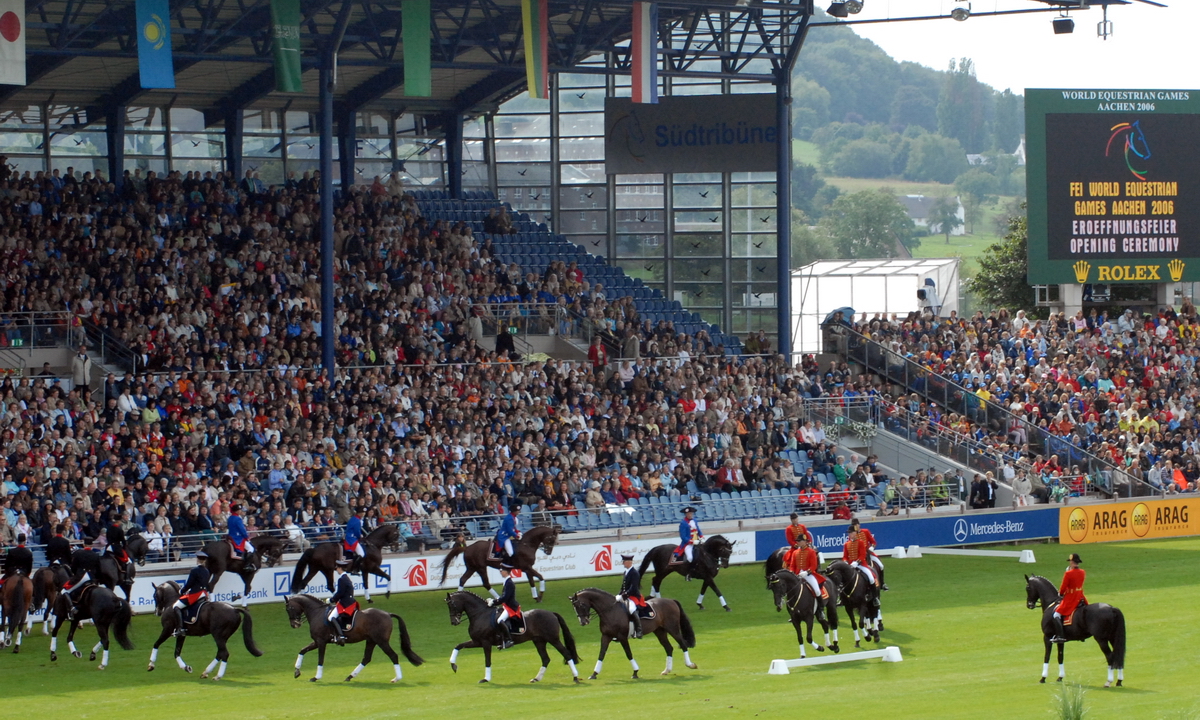
The FEI World Equestrian Games is important for many reasons beyond the fact that it includes eight world championships. The 2018 WEG is a qualifier for the 2020 Tokyo Olympics. Countries have to earn their way to the most prestigious and publicized sporting event on earth.
At the same time, equestrian sport has not always been confident of continued inclusion in the Olympics as those Games keep changing to attract a wider (and often younger) audience. Example: Skateboarding will be part of the program in Tokyo. Equestrian competition is expensive to put on and Olympic leaders at some point in the future may not be convinced that it has enough of a following to serve the purposes of the Games. It does, however, seem secure for 2024 (Paris) and 2028 (Los Angeles) as the International Equestrian Federation (FEI) has made changes geared to having dressage, jumping and eventing remain part of the Olympic family. Even so, it behooves equestrian sport to ensure it has a big stage of its own in case it is ever dropped from the Olympics.
That would be the WEG. Putting it on has never been easy, to the point that some have suggested it should be scrapped in favor of pairing two or three world championships in different countries around the world to give a variety of locations an opportunity to stage major competitions.
The original WEG concept 28 years ago was a “one-off” to take all the world championships—held every four years in the Olympic disciplines of jumping, eventing and dressage and every two years in the other sports—and showcase them in a unique offering where everyone could watch a variety of sport in one place.
But the 1990 Stockholm presentation (which did not include reining or para-dressage) went so well that the FEI decided to continue the concept. After that, however, it became evident the WEG idea was easier said than done. When Paris withdrew as the 1994 host, The Hague in the Netherlands stepped in. Unfortunately, it was a financial disaster during one of the hottest summers in European history. Loss of sponsorship at the next WEG, in 1998, originally planned to be held in Ireland, meant the WEG wound up moving to Rome, which did a credible job with very short notice. The 2002 WEG in Jerez, Spain, was difficult financially.
The most successful WEG was held in Aachen, Germany, in 2006, but as the scene of one of the world’s biggest shows, Aachen started with a firm foundation. The Kentucky Horse Park had all the makings of glory for 2010, yet it was plagued with a variety of administrative missteps, financial woes and overpriced hotels that irked spectators. It ended with a loss of more than $1 million.
Aachen and Kentucky were the only two venues where something remained after the WEG ended. Since the Aachen WEG was run by the same organizers who put on the annual competition at its grounds, it was part of a continuum. The Kentucky Horse Park’s WEG, the only one held outside Europe thus far, resulted in improvements to the facilities that continue to be the scene of competition, as was the case before its WEG.
Normandy, France, in 2014, didn’t stick with the original concept of having everything in one location (neither did The Hague, Rome or Jerez). Two phases of the eventing were miles from the city, with access only by narrow roads that led to a traffic jam and caused some ticketholders to miss cross country.
The 2018 WEG was in trouble early on because the host, Bromont in Canada, couldn’t get government appropriations. That was the case when it was the only bidder in 2011 and got the nod anyway. But because of the financial situation, the FEI reopened the bidding in 2013. The only other possibility at that time was the Kentucky Horse Park, but it withdrew. So Bromont was selected again, but by mid-summer 2016, it was obvious financial backing was not forthcoming and Canada would be unable to host the WEG.
Tryon stepped up and was awarded the 2018 WEG in November 2016. While that didn’t give it much time to prepare, Mark Bellisimo always goes full steam ahead.
Mark is a horse sport impressario with properties that go practically from coast to coast. He revitalized the Winter Equestrian Festival in Wellington, Florida, where he started the Adequan Global Dressage Festival, a national and international destination for the discipline. Also under his umbrella is the International Polo Club in Wellington. The Colorado Horse Park is another property over which he presides with a variety of partners.
Going forward, the WEG has troubles again because the Samorin Equestrian Center in Slovakia—which was slated to hold the Games in 2022, decided not to sign on the dotted line. Might Tryon take advantage of the vacuum, as it did for the 2018 edition, and bid for the WEG once more?
When asked, Mark responds, “Ask me on Sept. 24.”
For more information about the WEG, including tickets and lodging, go to www.tryon2018.com.
This article was originally published in the February 2018 issue of Practical Horseman.
Click here for complete eventing, show jumping and dressage coverage, event highlights, and a behind-the-scenes experience during #Tryon2018. Coverage of the FEI World Equestrian Games™ Tryon 2018 is brought to you by SoftRide and Hylofit






